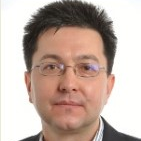Recent Advances in Quasicrystals
A special issue of Crystals (ISSN 2073-4352). This special issue belongs to the section "Crystalline Metals and Alloys".
Deadline for manuscript submissions: closed (15 September 2023) | Viewed by 3912
Special Issue Editors
Interests: applied mathematics; conservation laws; configurational mechanics; nonlocal elasticity; gradient elasticity; wave propagation; dislocation theory; fracture mechanics; quasicrystals; piezoelectric materials
Interests: dislocation dynamics; generalized continuum field theories; nonlocal elasticity; gradient elasticity; microcontinuum field theories; wave propagation; applied mathematics; configurational mechanics; quasicrystals; piezoelectric materials
Special Issue Information
Dear Colleagues,
This Special Issue of Crystals is devoted to the “Recent Advances in Quasicrystals”. The aim of the Special Issue is to bring together researchers spanning the wide spectrum of quasicrystals, providing a current depiction of the research in this field, offering a venue for a deeper understanding and embracing new technologies and applications, in which the unique features of quasicrystals and their great potential can be unveiled. This Special Issue welcomes contributions in topics that include mathematics, physics, material science, mechanics, metallurgy, and crystallography, covering the highly interdisciplinary research in the field of quasicrystals.
All papers should contain original results relating to theoretical, experimental, or computational research, as well as applications of quasicrystals in technology. Crystals is open to both original research articles and review articles. The topics of the Special Issue include, but are not limited to, the following:
- Structure and symmetries of quasicrystals.
- Properties of quasicrystals: physical, optical, transport, electric, magnetic, chemical, piezoelectric, etc.
- Defects in quasicrystals: cracks, dislocations, inclusions, etc.
- Experimental techniques for microstructure and defect investigation.
- Generalized dynamics of quasicrystals.
- Soft-matter quasicrystals.
- Applications of quasicrystals in technology.
Dr. Eleni Agiasofitou
Dr. Markus Lazar
Guest Editors
Manuscript Submission Information
Manuscripts should be submitted online at www.mdpi.com by registering and logging in to this website. Once you are registered, click here to go to the submission form. Manuscripts can be submitted until the deadline. All submissions that pass pre-check are peer-reviewed. Accepted papers will be published continuously in the journal (as soon as accepted) and will be listed together on the special issue website. Research articles, review articles as well as short communications are invited. For planned papers, a title and short abstract (about 100 words) can be sent to the Editorial Office for announcement on this website.
Submitted manuscripts should not have been published previously, nor be under consideration for publication elsewhere (except conference proceedings papers). All manuscripts are thoroughly refereed through a single-blind peer-review process. A guide for authors and other relevant information for submission of manuscripts is available on the Instructions for Authors page. Crystals is an international peer-reviewed open access monthly journal published by MDPI.
Please visit the Instructions for Authors page before submitting a manuscript. The Article Processing Charge (APC) for publication in this open access journal is 2600 CHF (Swiss Francs). Submitted papers should be well formatted and use good English. Authors may use MDPI's English editing service prior to publication or during author revisions.
Keywords
- structure and symmetries of quasicrystals
- properties of quasicrystals
- defects of quasicrystals
- experimental techniques for microstructure and defect investigation
- generalized dynamics of quasicrystals
- soft-matter quasicrystals
- applications






